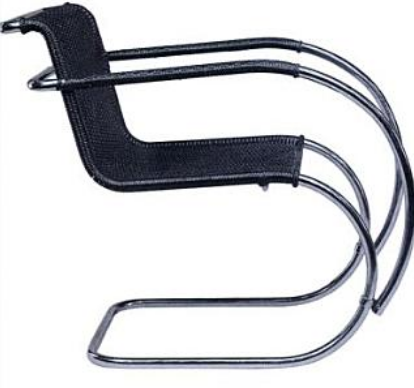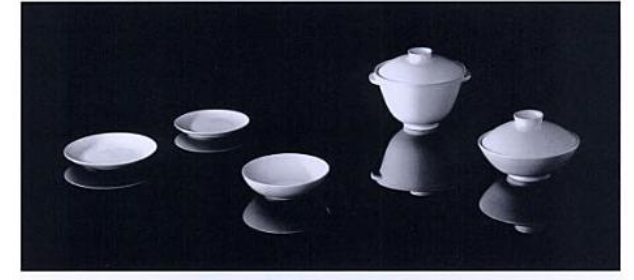The principles of modernism affected many areas of human activities, including product design. It is necessary to focus on the following important distinctions of this style, namely:
- the absence of ornamental elements and minimalism;
- pure geometrical forms;
- the use of new materials;
- the suitability of the modernist designs for mass production (Greenhalph 1990).
At the beginning of the twentieth century, these features were very innovative and only few designers were willing to adopt this approach. This is why they can be called modern, at least if one speaks about the design which existed at that time.
Yet, nowadays there techniques are viewed as something conventional and very widespread. This is one of the main issues that should not be overlooked.
Overall, it is possible to argue that the principles of modernism are of great relevance to contemporary designers who attach importance to such criteria as utility, aestheticism, and cost-effectiveness.
These are the main questions that should be examined in this essay. They are vital for describing the principles of modernism.
In order to discuss the innovative aspects of modernist product design, one should first mention that the aesthetics of this movement which mostly rejected those elements which did not serve any practical purposes.
This approach is described as minimalism or functionalism which means that every element of design should perform a certain function (Bertens 1997, p. 92).
In contrast, purely decorative components are considered to be redundant by the supporters of the modernist movement (Bertens 1997, p. 92). These principles were particularly applicable to architecture and interior design.
Yet, this idea also appealed to many manufacturers of that period because they wanted to make the products available to a great number of clients (Bertens 1997, p. 92). This background information can throw light on the influence of modernism on product design.
This is one of the main aspects that should be taken into account. Overall, the absence of ornamental elements can be best illustrated by looking at the piece of furniture that was created during this period.
For example, the following photograph exemplifies the principles of minimalism and functionalism:

Figure 1: The armchair designed by Ludwig Mies van der Rohe (Raizman, 2003, p. 189)
On the whole, this armchair highlights the way in the idea of functionality influenced the work of designers who tried to combine utility with aestheticism. In their view, these elements could be reconciled with one another. There are virtually no decorative components.
This is one of the main distinctions that explain the principles of modernism and its influence on design.
One should mention that this approach to design differed dramatically from the techniques that were used during the earlier periods.
For example, the furniture, made by the supporters of the Art Nouveau Movement, could contain tracery, carvings or the use of acrylic painting. In most cases, these components did not play any functional goal and their utility was usually minimal.
In contrast, modernist designers did not want to include these components because in their opinion, decorations were superfluous. This is one of the main points that should be considered. The design of furniture was not the only area that was transformed by modernism.
There are many other fields of product design that were changed by this aesthetic movement. For example, one can speak about the design of dinnerware created in the early fifties

Figure 2: Dinnerware designed by Trude Petri (Raizman, 2003, p. 189)
Again, it is important to remember dinnerware created in the pre-modernist period usually created a great number of decorative elements. Furthermore, one should focus on the use of pure geometric forms such triangles, spheres, or squares.
On the whole, this technique enabled the designers to emphasize the minimalism or austerity of their products. Moreover, in this way, the designers could illustrate the novelty of their work and its difference from previous artistic styles and movements.
As it has been said before, many critics and buyers could not readily accept this style because these forms were deemed to be very unconventional (Bertens 1997). This is main peculiarity that should not be disregarded when examining the forms that are associated with modernism.
It is possible to look at the photograph taken in 1930. To a great extent, this picture was aimed at popularizing the new approach to the product design.

Figure 2: A Model for the New Living Style (Greenhalph 1990, p. 98)
This picture indicates that that modern designers preferred clear surfaces and pure geometric forms that have no irregularities.
One should take into account that in the first half of the twentieth century, this technique was perceived as something very innovative because the majority of architects and designers avoided the use of pure geometric forms.
In their opinion, this technique was too simplistic or even crude (Greenhalph 1990). Moreover, this form was not readily accepted by buyers who were accustomed to the presence of decorative elements.
However, the development of modernist design popularized the new methods of production and aesthetic styles.
Therefore, it is possible to say that the principles of modernism are no longer regarded as something very innovative. This is one of the main peculiarities which should be taken into account by people who study the role of modernism.
Additionally, it is important to pay close attention to the use of materials that became very popular during the age of modernist design. Among the most popular materials that were applied in the pre-modernist era, one can distinguish wood, glass, and metal (Raizman 2003).
However, the situation began to change at the beginning of the twentieth century when scientific changes widened the opportunities that were available to designers.
One should focus on such materials as polyester, stainless steel, polypropylene, heat-resistant glass, aluminum, and even silicon (Raizman 2003; Ross 2008, p. 132). They could be employed for the production of furniture, home appliances, vehicles, and many other products.
One can also say that they greatly contributed to the rise of mass production (Cresswell & Lambert 2003, p. 122). It should be kept in mind that the development of modernism reflected the increasing industrializations of the society.
The materials that have been mentioned facilitated the work of manufacturers that were oriented to the needs of mass consumer market. Thus, this aspect of modernist turned out to be very useful to them.
Moreover, at that time, this approach was perceived as something very innovative because people preferred to buy products made of glass, metal, or wood. This is one of the main details that should be identified since it is vital for examining the effects of modernism on product design.
Furthermore, there is another detail which suggests that modernism revolutionized the principles of product design.
Such principles as minimalism, the reliance on geometric forms, and the use of innovative material enabled businesses to launch mass production of products (Raizman 2009, p. 189). To some degree, the adoption of the modernist principles helped companies increase the volume of production.
Moreover, modernist approach to product design facilitated the standardization of items that had to be manufactured (Raizman 2009, p. 189).
This peculiarity was of great use to many manufacturers that were producing large quantities goods at the beginning of the twentieth century (Raizman 2003, p. 189; Parsons 2009, p. 110). One can say that these techniques are now widely used by many companies which rely on assembly line.
This aspect is also critical for understanding the novelty of modernism and its role in the course of history.
Overall, these cases suggest modernism played an important role in the product design. In this case, one can speak about minimalist aesthetics, functionalism, pure geometric forms, the use of innovative materials, and orientation toward mass production.
Nowadays, the innovation brought by modernism are now taken for granted, but at the modernism emerged these changes were regarded as a breakthrough. To a great extent, the principles of the modernist movement opened a new era in product design and their effects are palpable nowadays.
This aesthetic movement increased the availability of many goods. Finally, it is possible to say that product design is one of those areas in which modernist principles continue to play a vital role. This is one of the main arguments that can be put forward.
References
Bertens, H 1997, International Postmodernism: Theory and Literary Practice, John Benjamins Publishing, Boston.
Cresswell, L & Lambert, B 2003 Product design: resistant materials technology, Heinemanin, New York.
Greenhalph, P 1990, Modernism in design, Reaktion Books, Boston.
Parsons, T 2009, Thinking: Objects: Contemporary Approaches to Product Design, AVA Publishing, London.
Raizman, D 2003, History of Modern Design: Graphics and Products Since the Industrial Revolution, Laurence King Publishing, New York.
Ross, S 2008, Modernism and Theory: A Critical Debate, Routledge, New York.